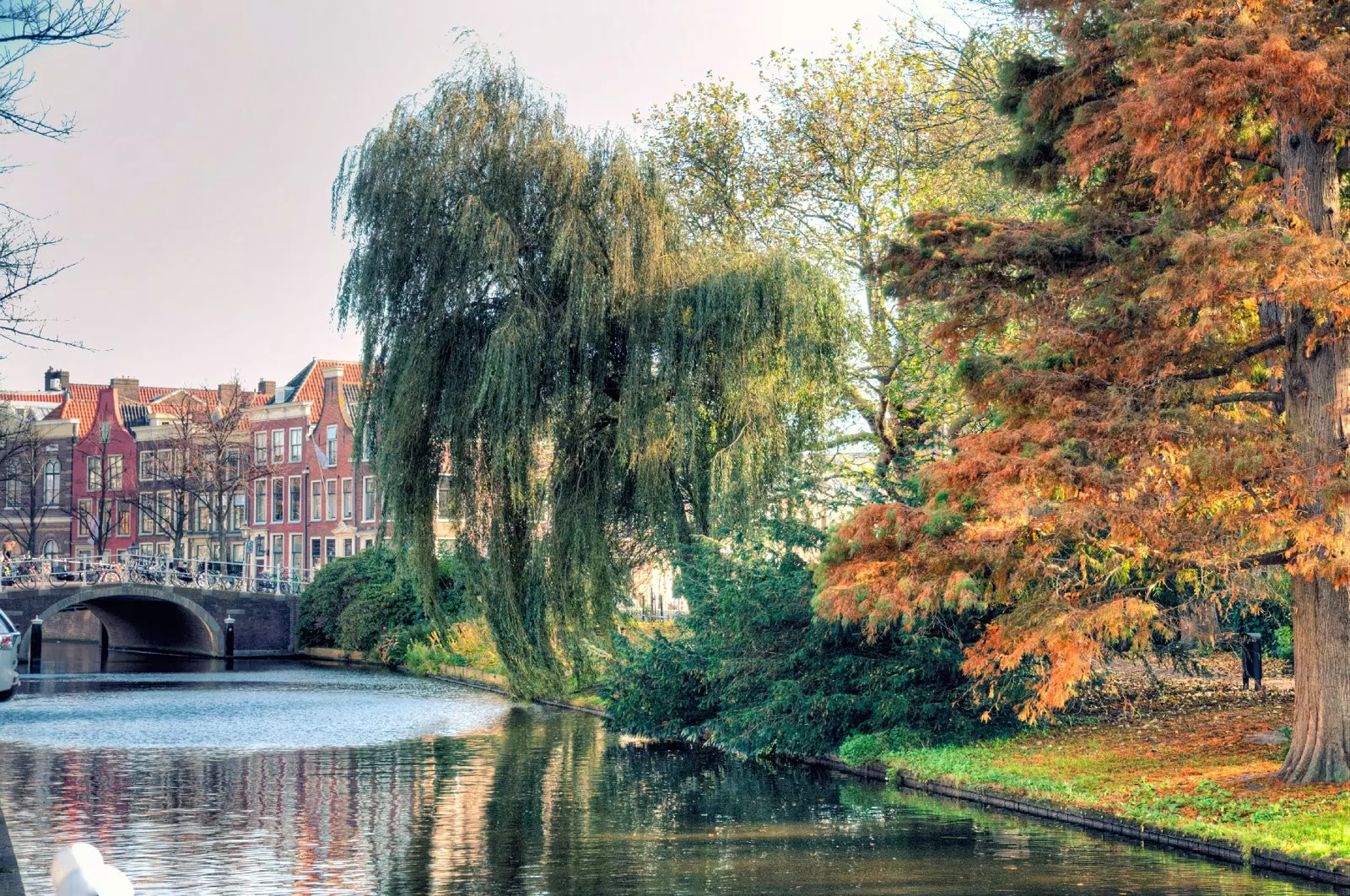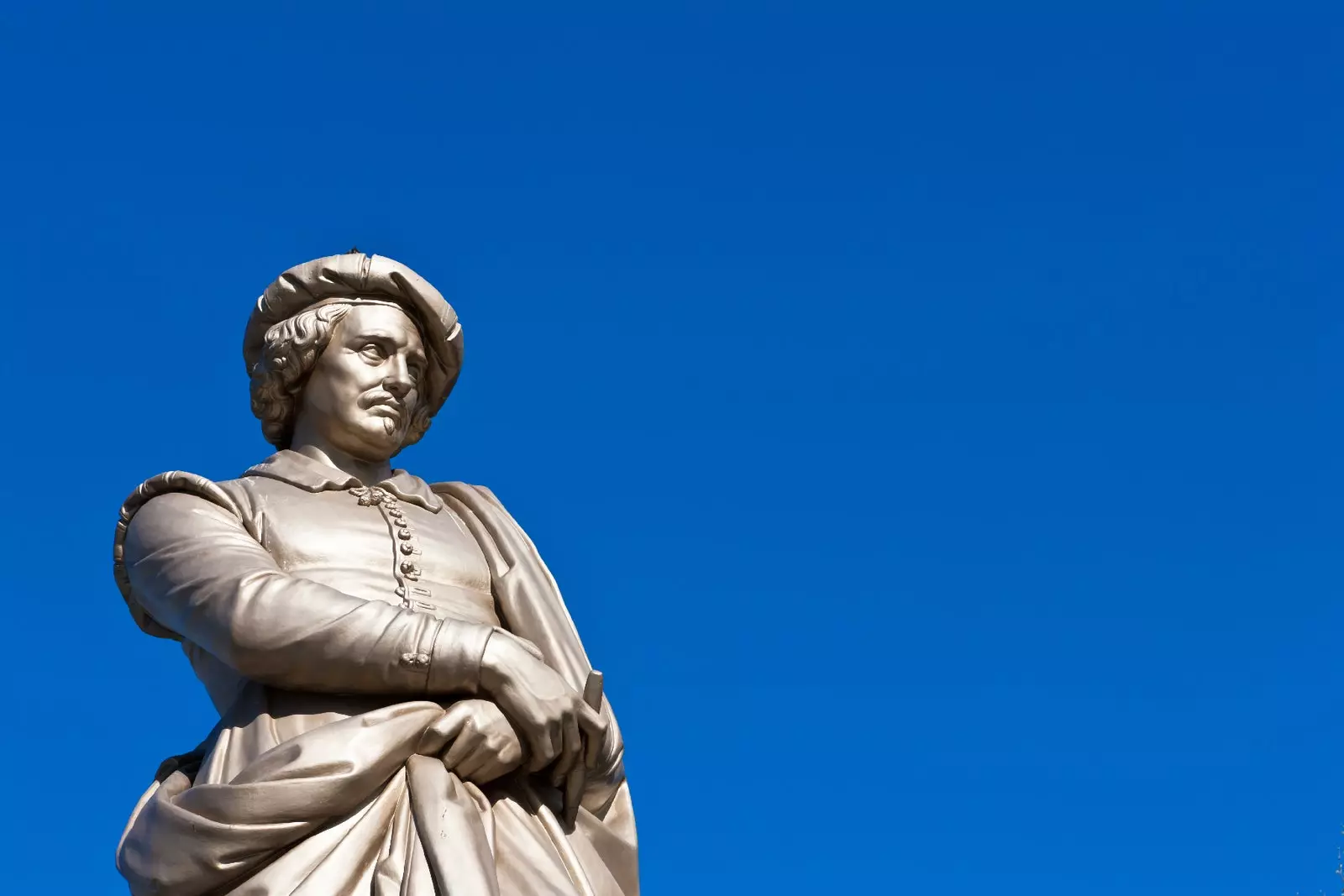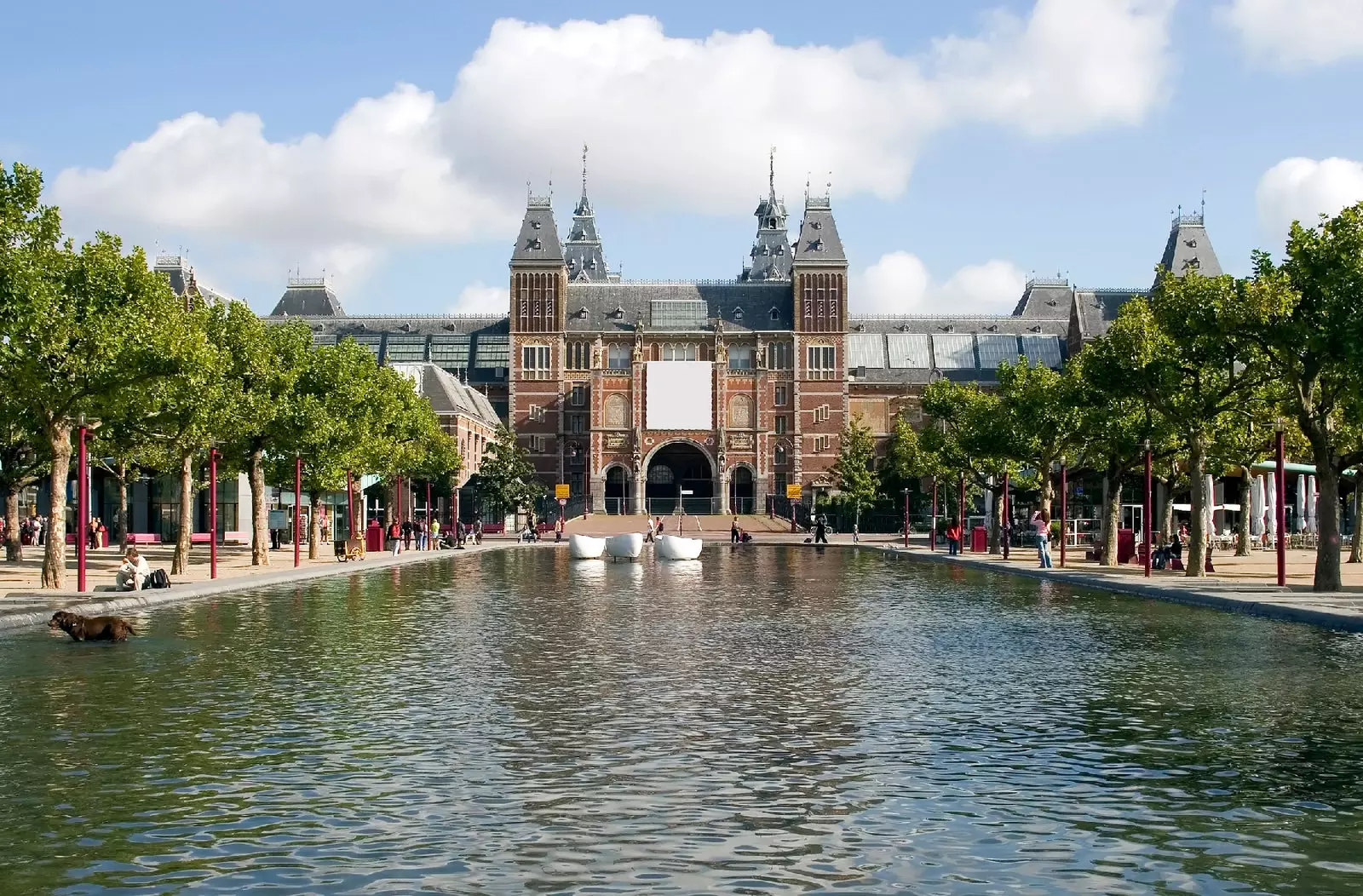
Leiden, the city where the genius was born
2019 marks the 350th anniversary of the death of Rembrandt van Rijn, one of the most beloved artists in Holland, and also in the world. A prolific and innovative master painter, engraver and draftsman who reached his peak in the seventeenth century, a time known as the Dutch Golden Age.
Hence throughout this year Holland wears its best clothes to honor what has been its most famous artist with exhibitions all over the country, from Amsterdam to Leiden, the city where the genius was born.
But what exactly was the Dutch Golden Age ? In less than a sentence: a period of great wealth for the Netherlands that lasted throughout the 17th century. It's all about money, and now you will see.
With the flourishing of trade, the cities that sent ships to Asia, Africa and America they were among the richest in the world, something that is still visible in their many mansions, canals, churches, walls and ports.
And with the money from trade came art and science, and with them young Dutch artists like Rembrandt, Hals or Vermeer. And this is how we fully entered the field.

2019, the year of Rembrandt
Rembrandt was born in Leiden, a charming city of crystalline light dotted with windmills and bridges located about 20 minutes by train from Amsterdam.
But apart from the famous artist, Leiden is known for being the home to the oldest university in the Netherlands, founded in 1575. And also for many other things, such as the fact that it was here that he saw himself a tulip for the first time in all Europe.
In Leiden, Rembrandt learned to draw and paint, and here he produced his first works. Along with him, other contemporaries such as Jan Lievens, Jan Steen or Gerrit Dou they also worked in the city, making Leiden the birthplace of the Dutch Masters of the Golden Age.
To put us in context, at this time Leiden was the largest city in the Netherlands after Amsterdam; the city's flourishing trade and tolerant hospitality attracted many immigrants, who reinvigorated and fueled its expansion.
Expanding did not expand much either, since today it continues to be a small city, although full of life. Leiden condenses more than 3,000 historical monuments that still today breathe the atmosphere of the prosperous Golden Age rejuvenated by a cosmopolitan university environment.
Versatile and full of life, Leiden allows the traveler follow in the footsteps of Rembrandt in the city and visit unique locations, such as knowing the exact place where the painter was born, although the original building was incomprehensibly demolished last century and today a work by the German artist Stephan Balkenhol, and a commemorative plaque, pay tribute to it.
The latin school where it was formed (Latijnse School) ; the University where, to the pride of his father, he enrolled and where records of his enrollment are still preserved today; he he gothic church of St. Pieterskerk, where his parents got married and where they are buried; either the workshop where he received lessons from his teacher Jacob van Swanenburgh (Langebrug, 89), and where you can enjoy an original projection of the chiaroscuro master.
In addition, the Lakenhal Museum , whose building is an old wool factory, prepares a major exhibition that will bring together Rembrandt's early works (under the title The Young Rembrandt), including the oldest known painting by the artist: Brillenverkoper (The Spectacle Seller, 1624) .
In a much less artistic and much more carnal terrain, the Great Van Buuren Cafe offers a mix of salads, soups and poké bowls perfect to satisfy hunger. The local beer, with an unpronounceable name, it pairs perfectly with a moment of relaxation and views of the calm canals.
Although what prevails now is the rest of the traveler, nothing better than doing it in the Boutique Hotel d'Oude Morsch , a charming accommodation located in an idyllic location and that has overlooking De Put, one of the 9 mills still standing today (in Rembrandt's time there were more than 50 in the city) .
Their vintage style bathtubs located in the middle of the room and its spicy pumpkin soup add two more to the unforgettable memories that the city of Leiden offers.

The Rijksmuseum prepares a most complete program for 2019
"Without atmosphere, painting is nothing", Rembrandt used to repeat. And in search of a different atmosphere, or a more promising future, at the age of 25 the young artist moved to ** Amsterdam, ** where he lived for the rest of his life.
Here he met the one he was his wife, Saskia, and also saw the birth of his son Titus, which probably ended up strengthening Rembrandt's bond with the city.
Many places, museums and corners of Amsterdam are witness to the mark left by the Master of Light, and that throughout this 2019 they will pay tribute to him.
Leading by example, the museum that houses the most complete collection of Rembrandt, the Rijksmuseum, prepares a complete program of exhibitions and activities that will begin on February 15, when it will bring together the artist's entire collection for the first time.
Vertigo figures for a unique occasion: 22 paintings, 60 drawings and the 300 best examples of the 1,300 engravings of him. But the Rijks still hides an ace up its sleeve that it will use in the fall, when the exhibition is presented Rembrandt-Velazquez, an exhibition that will bring together the work of the two great masters of the 17th century from Holland and Spain, and also of their contemporaries.
For the first time works of Velázquez, Rembrandt, Murillo, Vermeer, Zurbarán, Hals and Ribera They will be exhibited together, thanks to a unique collaboration between the Dutch art gallery and the Prado Museum. The occasion deserves it.
And it is precisely in the Rijksmuseum where you can visit Rembrandt's most famous work, the night watch, a picture where nothing is what it seems.
To begin with, its original title is The Military Company of Captain Frans Banning Cocq and Lieutenant Willem van Ruytenburg and to continue, it is not a nocturnal work, but the canvas gradually darkened and ended up being called that by mistake.
And although it can be considered the jewel in the crown of the Rijksmuseum, it has not always been exhibited in the noble hall of the museum, since for 100 years it occupied one wall of what is now the NH Collection Doelen, the oldest hotel in Amsterdam.
A lot of history, or all, of this corner formed by the Kloveniersburgwal canal and the Amstel river, since this was the headquarters of the militiamen that appear reflected in the painting and that the artist painted on request. Hence it was placed here.
In 1855, once converted into a hotel, the building continued to nurture its own legend by providing accommodation to illustrious figures of the time such as Empress Sissi; today one of the hotel suites bears her name and hangs from its ceiling the same chandelier that lit his original room.
Also within its historic walls you can find other details such as the remains of the original wall from 1482 that protected the city. Today, from the wall of suite number 11 where The Night Watch was hung, there is a copy of the same size as the original, a privilege like few others to sleep next to a work of art.
And not far from the Doelen, whatever it was Rembrandt's studio house It is throughout 2019 another of the strong points within the range of activities designed for the anniversary of the artist's death.
For twenty years, Rembrandt lived and worked in this impressive building in the heart of Amsterdam, now converted into an interactive museum which has a powerful 17th-century inventory of furniture, art, and objects from that era, as well as an almost complete collection of Rembrandt prints and settings.
Throughout the year they will happen here three successive exposures that will affect the social and family network of the genius.
If there is a work by Rembrandt that casts the slightest shadow on The Night Watch, that is it, The Anatomy Lesson of Dr. Nicolaes Tulp.
And as it was not going to be less, she also has her piece of history and connection with Amsterdam although the painting is currently in the Mauritshuis Royal Gallery of Paintings in The Hague.
Known as Anatomy Lesson to dry, it was painted on the Waag, a medieval building on the historic Nieuwmarkt square. Here, on its upper floor, numerous guilds, painters among them, settled in the 17th century, and it was here that Rembrandt painted the famous work, as rich as it is overacted, commissioned by the egotistical doctor Tulp in times when instagram filters did not exist.
The structure of the building remains intact and today in the Waag there are a modest restaurant where you can eat simple and delicious which also has a large beer menu.
MORE TRIBUTES
For its part, the Fries Museum, in Leeuwarden will delve into marriage in high society in the 17th century, taking Rembrandt and his wife, Saskia, as the guiding thread in an exhibition that will open on November 24 under the title Rembrandt & Saskia: Love in the Dutch Golden Age (Rembrandt and Saskia, love in the Dutch Golden Age) and which will be the prelude to the thematic year throughout 2019.
As if that were not enough, placing the historical context of the master and to show the artistic wealth of the country in the Golden Age, a series of exhibitions in Delft, Dordrecht, Haarlem, Middelburg, Hoorn and Enkhuizen, will present different perspectives on various artists of the time (including Pieter de Hooch at the Prinsenhof Museum in Delft, and Nicolaes Maes at the Mauritshuis in The Hague).
